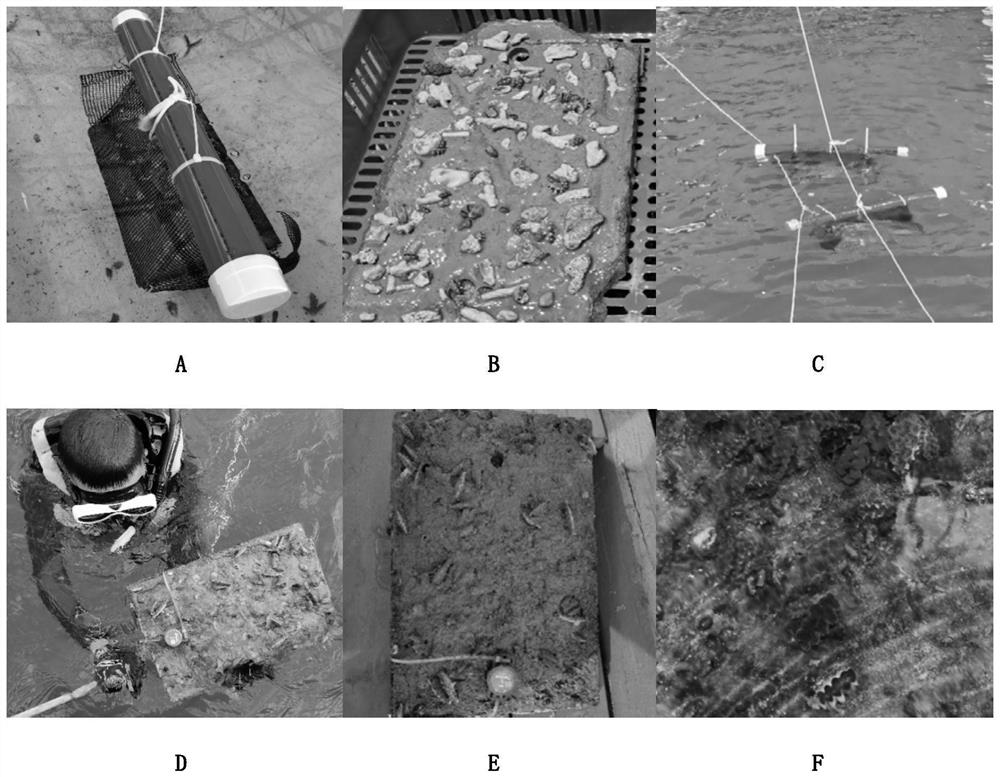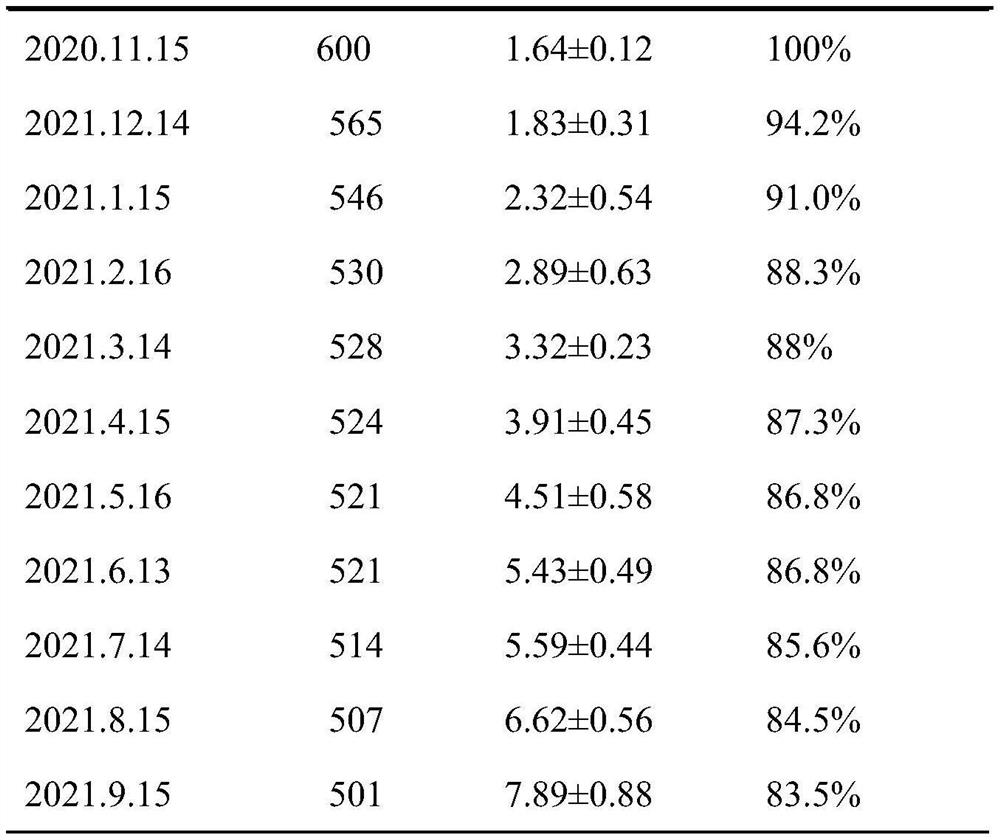Method for culturing tridacna juvenile mollusks in hanging type net cage
A technology for cultivating and cultivating clam clam in cages is applied in the field of cultivating clam juveniles in hanging net cages, which can solve the problems of affecting the growth of clam clam, difficult and time-consuming operation, and high labor cost, and achieves strong practicability, easy promotion, and reduction of The effect of small proliferative costs
- Summary
- Abstract
- Description
- Claims
- Application Information
AI Technical Summary
Problems solved by technology
Method used
Image
Examples
Embodiment 1
[0018] Embodiment 1: as figure 1 shown
[0019] a. Selection and attachment of juvenile giant clam spat: The giant clam seedlings released this time are scaleless giant clam seedlings artificially bred by our team at the Rehai Marine Biological Experimental Station of the Chinese Academy of Sciences in Sanya. At the beginning of November 2020, select healthy scale-free giant clam seedlings with a size of 15mm-20mm, and implant them on a cement board with a length of 58cm x width 38cm x thickness 2cm. And it has been firmly fixed on the cement board, and the spat at this time have completed the fixation process.
[0020] b. Production of suspended cages: In mid-November 2020, 20 triangular conical closed cages with specifications of 58cm long x 38cm wide x 15cm high were made using nylon nets with a pore diameter of 15mm. The selection of 15mm nylon net can prevent giant clam spat from falling out of the cage, and also ensure its sufficient light transmission. On the one han...
Embodiment 2
[0029] a. Selection and attachment of juvenile giant clam spat: The giant clam seed released this time is the safflower clam seed artificially bred by our team at the Rehai Marine Biological Experimental Station of the Chinese Academy of Sciences in Sanya. At the beginning of November 2020, select healthy safflower clam seedlings with a size of 15mm-20mm, and implant them on a cement board with a length of 58cm x a width of 38cm x a thickness of 2cm. And it has been firmly fixed on the cement board, and the spat at this time have completed the fixation process.
[0030] b. Production of hanging net cages: In mid-November 2020, 10 closed triangular conical cages with specifications of 58cm long x 38cm wide x 15cm high were made using nylon nets with a pore diameter of 15mm. The selection of 15mm nylon net can prevent giant clam spat from falling out of the cage, and also ensure its sufficient light transmission. On the one hand, the closed triangular cage can prevent wind and ...
PUM
| Property | Measurement | Unit |
|---|---|---|
| Size | aaaaa | aaaaa |
| Aperture | aaaaa | aaaaa |
Abstract
Description
Claims
Application Information
 Login to View More
Login to View More - R&D
- Intellectual Property
- Life Sciences
- Materials
- Tech Scout
- Unparalleled Data Quality
- Higher Quality Content
- 60% Fewer Hallucinations
Browse by: Latest US Patents, China's latest patents, Technical Efficacy Thesaurus, Application Domain, Technology Topic, Popular Technical Reports.
© 2025 PatSnap. All rights reserved.Legal|Privacy policy|Modern Slavery Act Transparency Statement|Sitemap|About US| Contact US: help@patsnap.com



